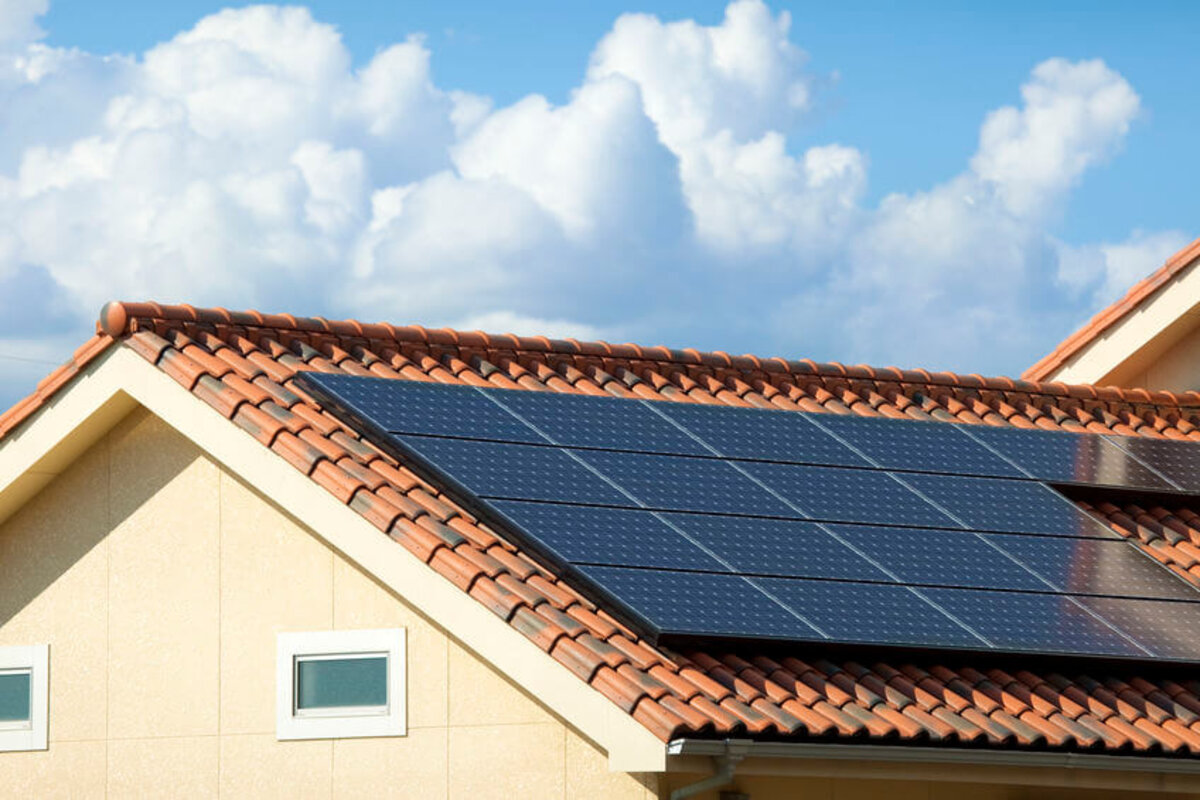
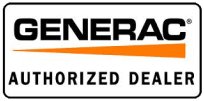





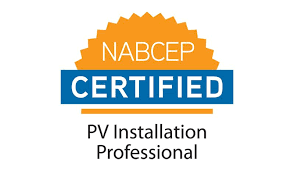
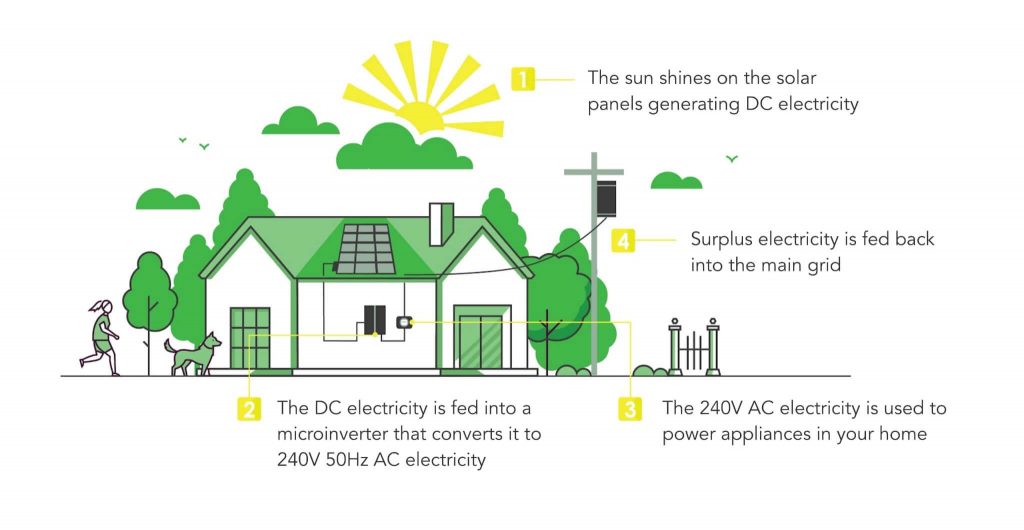
Your solar panels will produce power only when the sun is shining for this reason you will still be connected to your utility grid. This is so you can take advantage of Net Metering to maximize the value of your system. Net metering is a billing mechanism that credits solar energy system owners for the electricity they add to the grid. For example, if a residential customer has a PV system on their roof, it may generate more electricity than the home uses during daylight hours. If the home is net-metered, the electricity meter will run backwards to provide a credit against what electricity is consumed at night or other periods when the home’s electricity use exceeds the system’s output. Customers are only billed for their “net” energy use. This is the most beneficial program for solar and is often mandated at a state level however some utilities have restrictions so you will always want to ask for a copy of your utilities net metering policy.
With parallel generation, the billing mechanism is different from net metering. With parallel generation the energy that you deliver to the grid will not offset the energy that you need from the grid on a 1:1 scale. In this scenario the energy that you may produce in excess of what you consume during daylight hours is purchased from your utility at a set amount per kWh. The electricity that you will need from the grid continues to be measured and you pay your normal retail rate. In most cases the set amount your utility company will pay you for your energy will be less than the retail rate. For this reason parallel generation is not as advantageous as Net metering but does still benefit solar owners in unique situations.
Solar panels are the main component of a solar system and are responsible for generating electricity from sunlight. There are many types of panels available in the residential and commercial market. A solar panel ranges in type, size, color and wattage. Most residential panels are now black with black anodized aluminum frames designed to be aesthetically pleasing for your home’s roof.
Three main performance measures used to compare solar panels
An Inverter is the device that inverts the DC electricity produced by the solar panel(s) into usable AC electricity for your home. There are several different types of inverters available. The two main types of inverters are String inverters and Micro inverters.

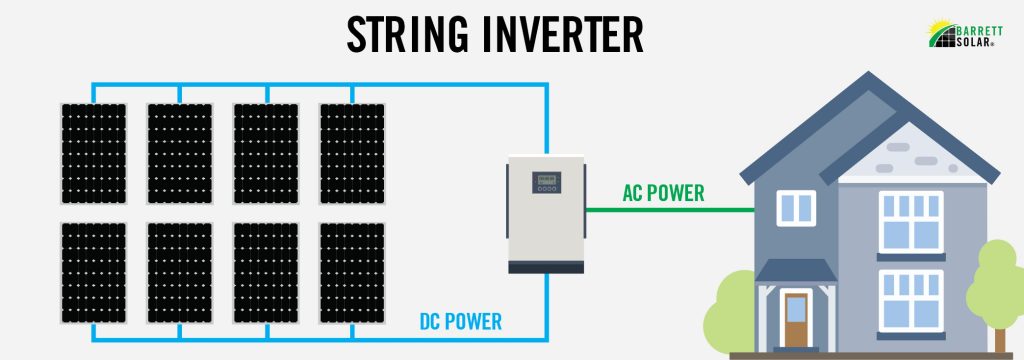
Commonly thought of as a standard option, a string inverter is a simplistic central inverter that takes the combined DC power from a string of panels and inverts it to AC electricity. String inverters work best for solar panel systems that receive consistent sunlight throughout the day or owners looking for lower cost solar systems
Microinverters are small, modular inverters that are mounted behind each solar panel and independently invert the energy production of each panel so that the reduced production of one panel does not affect the output of an entire system. For this reason Micro inverters are Barrett Solar’s technology of choice for residential projects.
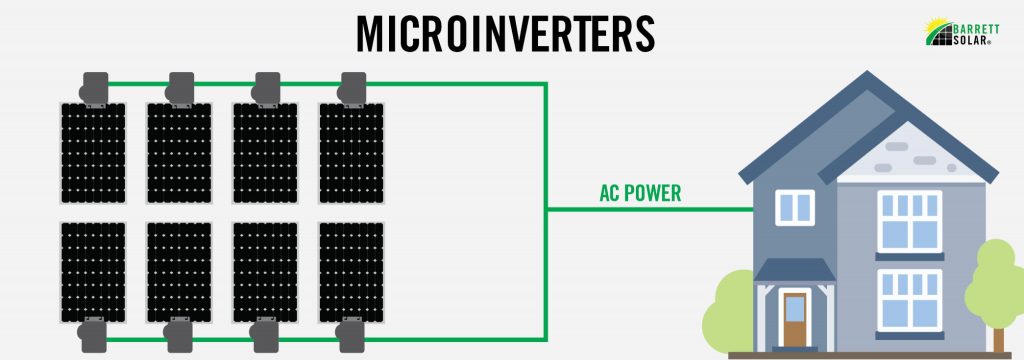
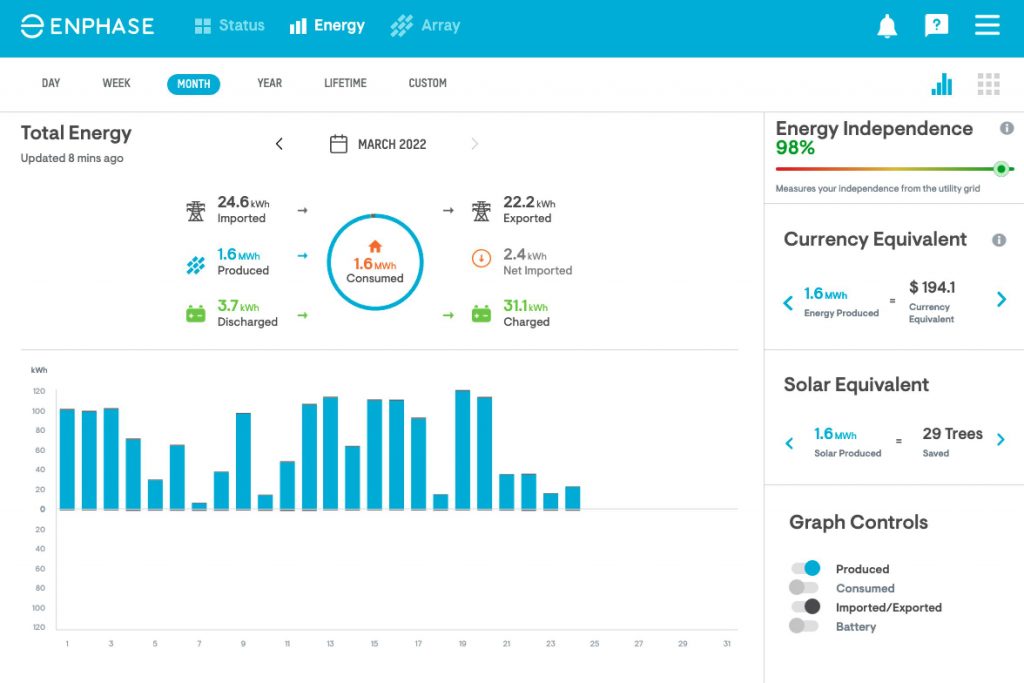
A solar monitoring system allows you to view real-time and historical energy production data from your system. It is very important that your system includes a monitoring system to ensure that your system is producing energy normally. All of Barrett Solar’s systems come with monitoring as a standard feature which includes both desktop and mobile app access so you can view your system’s performance from virtually anywhere at any time.
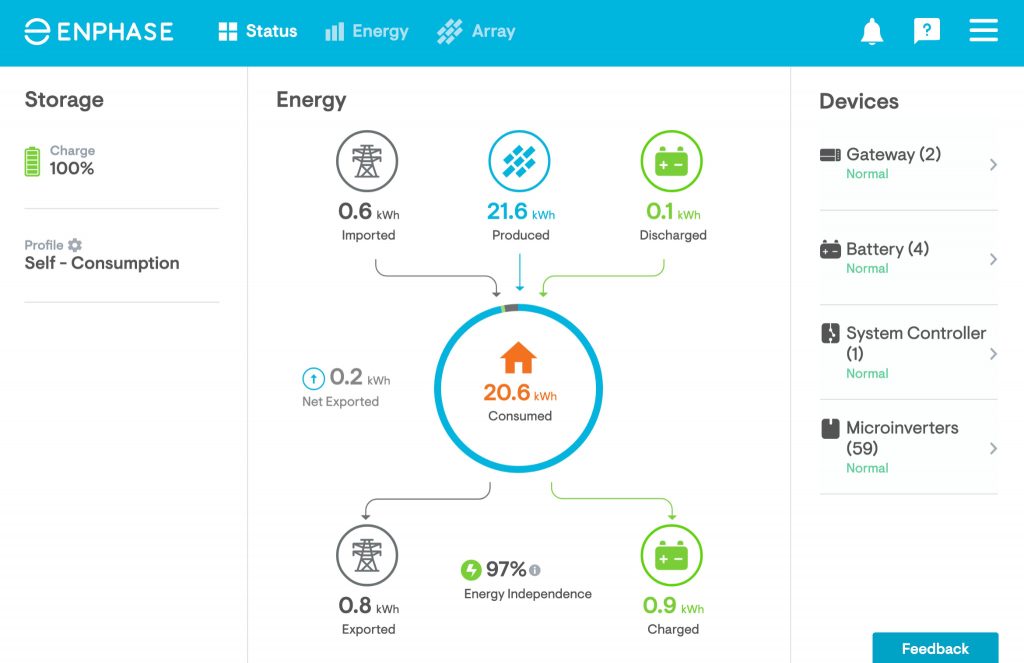
Barrett Solar offers a wide variety of financing options for both residential and commercial solar systems. Probably the most straightforward and to no surprise a homeowner or building owner can pay cash for a solar panel system. For those that do not want to pay outright for their systems we have some really great financing options that require zero down with interest rates as low as 0.99%! We have terms ranging from 5 years up to 30 years which really allow you the flexibility of a payment that works for your budget. In most cases a homeowner can finance a solar panel system for zero dollars and end up with a monthly payment less than their current electricity bill.
The actual installation of a solar panel system typically takes only a day or two however a lot more than just the installation goes into the project. It all starts with a free design and consultation from a Barrett Solar expert. Once a system is designed, financing is determined and an installation agreement is signed our engineers take over. While your engineering is being completed we will work with your utility company on your net metering application and your county on your permit if needed. Once net metering and your permit is approved we prepare your materials and schedule your installation. After installation there will be various inspections which can take a couple of weeks but after successfully passing these inspections your system can be turned on and you will then enjoy all the benefits of your new solar panel system. It may seem like a lot but when you go solar with Barrett Solar we take care of it all and focus on making the process as enjoyable as possible for you.
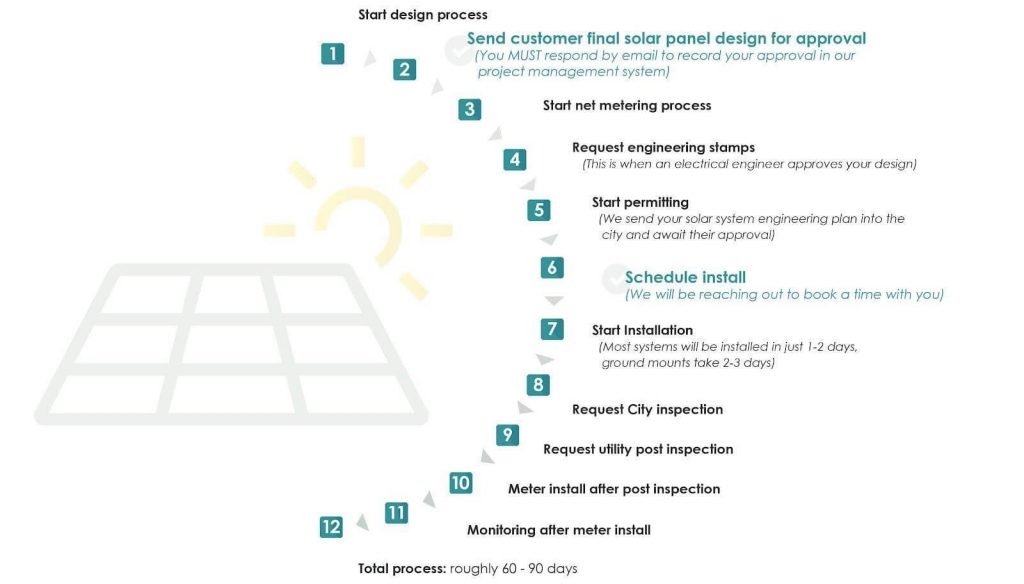
Get answers to your most common questions from Barrett Solar
Yes, but you will need backup power solutions like batteries or generators. In some cases the county or city jurisdiction where your property is located may restrict you from going off-grid.
Solar panel systems are made of durable tempered glass and require little to no maintenance for the 25 to 35 years that they will generate power. In most cases, you don’t even need to clean your solar panels. You can let the rain or snow take care of that for you. If something does happen, you will have manufacturer warranties on all equipment installed by Barrett Solar.
Generally solar can mount to any style roof. Ideally you want solar panels on a south facing slope, however, east and west facing slopes are suitable as well. North facing slopes generally will not have enough direct sunlight to produce a significant amount of power.
A solar panel system can last for over 25 years and removing them to replace your roof can be an added expense. If your roof is in poor condition it is best to replace before installing solar. Otherwise one of our experts can help you determine if you need a new roof or not.
A solar panel system from Barrett Solar will be very durable and capable of generating electricity for 25 to 35 years. All the solar equipment we offer come with industry leading warranties which protect your investment for at least 25 years to come.
This can depend on many factors and it ultimately comes down to your unique property details. Generally a roof mounted system will cost less than a ground mount but in some cases you can produce more power with a ground mount system meaning you need less panels so the cost could be identical. Cost aside, some property owners have a preference on aesthetics. {click here to view our gallery.}
Here at Barrett Solar we use the best equipment the industry has to offer. Your main components including your panels, inverts and racking will come with manufacturer warranties that cover the performance of each product in most cases up to 25 years! You will also receive a 5 year workmanship warranty covering all aspects of our installation service.
Solar Incentives & rebates are available – Solar rebates and incentives vary depending on where you live. In Kansas and Missouri, the largest incentive available is the 26% federal investment tax credit (ITC) which allows you to deduct 26% of the cost of your solar energy system from your taxes. Certain municipalities and utilities also offer cash rebates and other incentives. If you are a business in a rural area or a farmer, the USDA offers grants as well.
Equipment with Performance and Durability in Mind. Barrett Solar Uses the Highest Quality Equipment Available, All Backed with Industry-Leading Warranties. You’ll Have Peace of Mind Knowing That Your Solar Investment Is Covered For Years To Come.
We are fully transparent, easy to deal with, offer great communications throughout the installation process and we delivery high quality equipment at the lowest prices!

4 Simple Steps to Owning Your Own Energy
Everything we do is designed to improve the customer’s experience with us. We have simplified the process for a homeowner/business owner to obtain a solar proposal. In most cases we can provide a quote digitally or over the phone!
STEP 1
Don’t waste another day renting your power. Call or email us now.
STEP 2
We provide free quotes for all our solar panel installations!
STEP 3
Don’t waste another day renting your power. Call or email us now.
STEP 4
Stop renting your power, start owning it!
200 NE Missouri Road STE 200
Lees Summit MO, 64086
(816) 584-4758